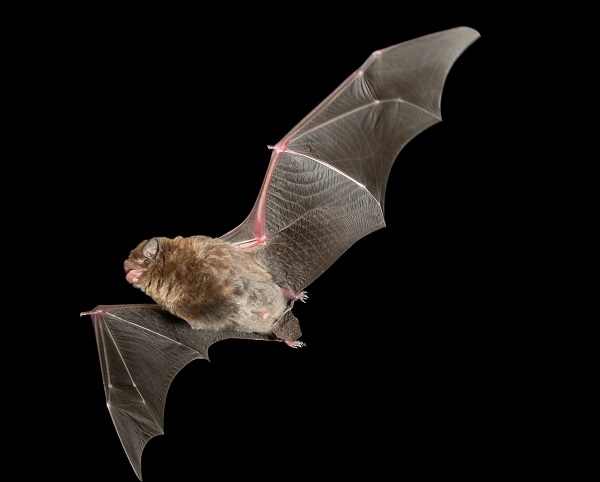Species information
The Southern Bent-wing Bat is a tiny microbat, measuring 52-58 mm long (head and body) and weighs about 15.7 g. It has dark brown to reddish brown fur on the back, grey-brown fur on the belly and a distinctive domed forehead. It eats a variety of insects, with moths making up a large proportion of the diet. It uses echolocation to navigate whilst flying and feeding at night. The Southern Bent-wing Bat is a Critically Endangered cave-dependant bat with a limited distribution. It is only found in south-western Victoria and south-eastern South Australia in a limited number of caves with suitable microclimate.
Photo: Steve Bourne
Threats
The Southern Bent-wing Bat population has declined dramatically in recent decades. This severe decline could lead to extinction without intervention.
A range of threats have been identified as potentially impacting the bat and contributing to the decline including; loss and modification of roosting caves (particularly maternity sites) and feeding habitats, people entering roost caves disturbing the bats, bioaccumulation of pesticides and toxins which may also reduce food availability, disease, and introduced predators. Climate change, including drought, is also predicted to negatively affect food availability. The risk posed by windfarm development and collision with turbines is being investigated.
What's being done?
Efforts to save the species are being supported by a $50,000 grant through the Victorian Government’s Biodiversity On-Ground Action Icon Species Grants program, which funds targeted actions designed to protect and conserve Victoria’s threatened species.
This funding is going towards:
- Managing the maternity cave for the Southern Bent-wing Bat in Victoria,
- Continued monitoring to assess the cave and determine population numbers and the breeding success in the summer of 2020/2021.
- Assessing the effectiveness of management actions to protect this critical site.
- A feasibility study about capping a hole in the cave ceiling to maintain and potentially improve the cave microclimate and minimise human safety risks.
In 2019 a National Recovery Team was formed with representatives from Victorian and South Australian government agencies, land managers, researchers and other stakeholders covering a range of knowledge areas including disease management, species ecology and cave management. This group is tasked with providing advice for the recovery of the species in line with the current Recovery Plan.
Who's helping?
Conserving Victoria's threatened species requires a collaborative approach. There are many organisations and groups working to protect the Southern Bent-wing Bat, including:
Southern Bent-wing Bat National Recovery Team
Department of Environment, Land, Water and Planning
Department for Environment and Water (SA)
Department of Agriculture, Water and the Environment
Australian Speleological Federation
Naracoorte Caves National Park
Resources
National Recovery Plan for the Southern Bent-wing Bat
Page last updated: 20/05/22
